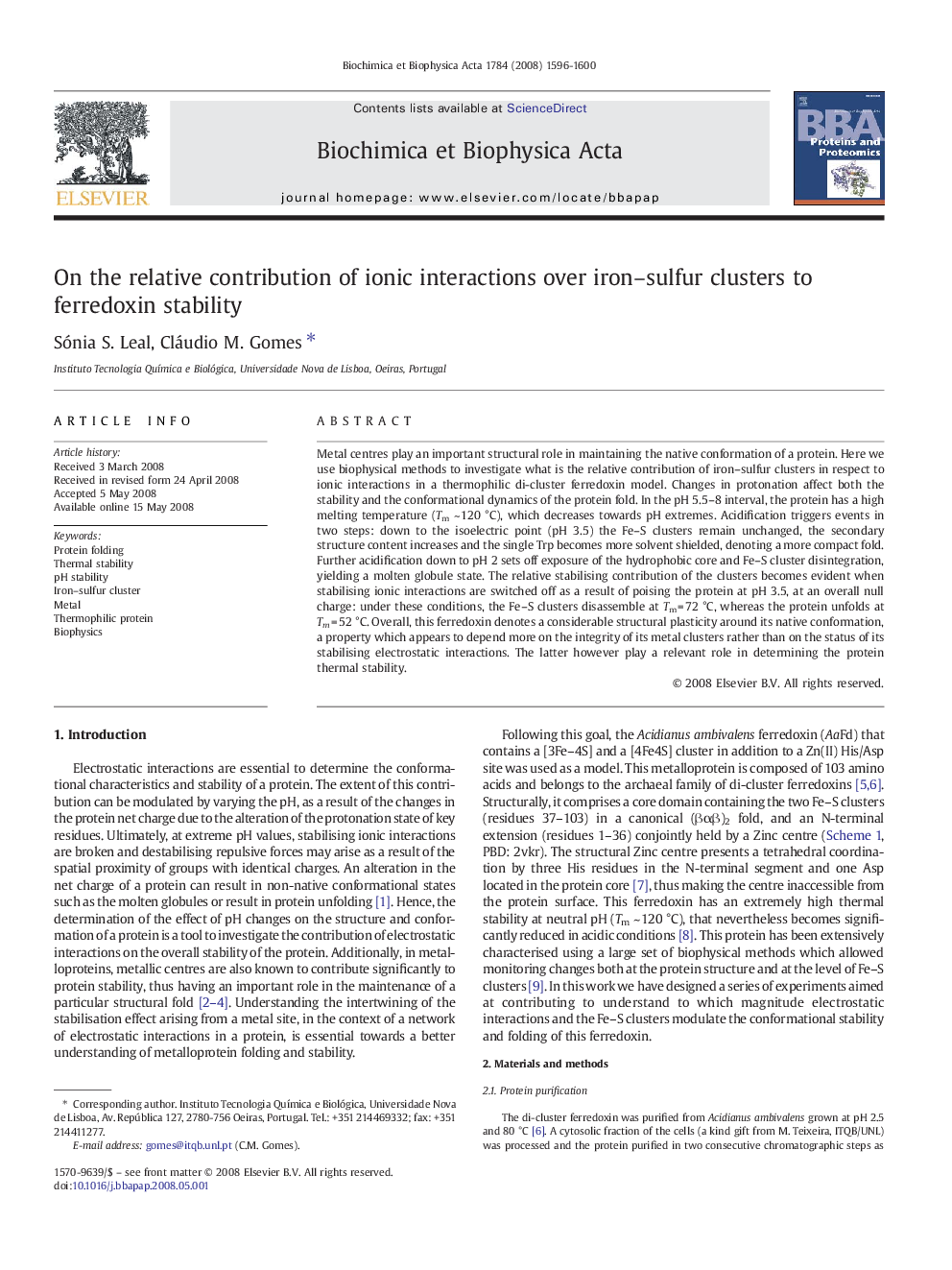| Article ID | Journal | Published Year | Pages | File Type |
|---|---|---|---|---|
| 1180461 | Biochimica et Biophysica Acta (BBA) - Proteins and Proteomics | 2008 | 5 Pages |
Metal centres play an important structural role in maintaining the native conformation of a protein. Here we use biophysical methods to investigate what is the relative contribution of iron–sulfur clusters in respect to ionic interactions in a thermophilic di-cluster ferredoxin model. Changes in protonation affect both the stability and the conformational dynamics of the protein fold. In the pH 5.5–8 interval, the protein has a high melting temperature (Tm ~ 120 °C), which decreases towards pH extremes. Acidification triggers events in two steps: down to the isoelectric point (pH 3.5) the Fe–S clusters remain unchanged, the secondary structure content increases and the single Trp becomes more solvent shielded, denoting a more compact fold. Further acidification down to pH 2 sets off exposure of the hydrophobic core and Fe–S cluster disintegration, yielding a molten globule state. The relative stabilising contribution of the clusters becomes evident when stabilising ionic interactions are switched off as a result of poising the protein at pH 3.5, at an overall null charge: under these conditions, the Fe–S clusters disassemble at Tm = 72 °C, whereas the protein unfolds at Tm = 52 °C. Overall, this ferredoxin denotes a considerable structural plasticity around its native conformation, a property which appears to depend more on the integrity of its metal clusters rather than on the status of its stabilising electrostatic interactions. The latter however play a relevant role in determining the protein thermal stability.
